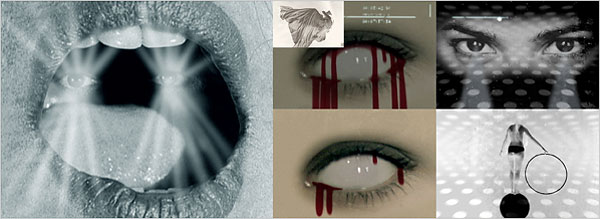
In the Dreamscape of Nightmares, Clues to Why We Dream at All
 The patient was a 37-year-old man who had been physically abused as a boy by his schizophrenic mother, often while he lay in bed trying to fall asleep. Nevertheless, he had grown into a reasonably normal, gainfully employed adult, and he thought that the worst was behind him, until one night he awoke to find an intruder rummaging through his dresser drawers. After that, his nightmares began — terrifying, recurrent dreams in which the intruder was a middle-age woman and a knife dangled with Damoclesian contempt from the ceiling fan over his head. “The old fear memories had not gone away,” said Dr. Ross Levin, a psychologist and sleep researcher at Yeshiva University in New York. They “were easily reactivated by the recent trauma,” and just as readily twisted into the basis of a repetitive nightmare. Dr. Levin urged the patient to reframe the dream and rehearse alternatives to swinging blades and frozen fear, until finally the nightmares abated and the man could regain his footing. Few of us suffer from nightmares crippling and persistent enough to demand treatment. Yet we all know how bad a nightmare feels, how it surrounds you and surges up to drown you and makes your teeth fall out in chunks and gives you leukemia and look, your 6-year-old daughter is running back and forth through traffic, and oh no, this train is headed the wrong way and it’s past midnight, and there you are a cowardly third-grader back on Creston Avenue in the Bronx, no, please, not the Bronx! And you scream and you thrash and you want to wake up. By all evidence, outrageously bad dreams are a universal human experience. Sometimes the dreams are scary enough to jolt the slumberer awake, in which case they meet the formal definition of nightmares — bad dreams that wake you up. At other times, they are even worse. The sleeper thinks the nightmare is over, only to step into Your Nested Nightmare, Chapter II. Whatever the particulars of the plot, researchers say, nightmares and dreadful dreams offer potentially telling clues into the larger mystery of why we dream in the first place, how our dreaming and waking lives may intersect and cross-infect each other, and, most baffling of all, how we manage to construct a virtual reality in our skull, a seemingly life-size, multidimensional, sensorily rich nocturnal roundhouse staffed with characters so persuasive you want to ... strangle them, before they can strangle you. A big reason bad dreams offer insight into the architecture of dreams generally is that, as a host of studies have shown, most of our dreams are bad. Whether research subjects keep dream journals at home or sleep in research labs and are periodically awoken out of rapid eye movement, or REM, sleep — the stage most often associated with dreaming — the results are the same: about three-quarters of the emotions described are negative. Moreover, said Robert Stickgold, a sleep researcher at the Harvard Medical School, we are ridiculously industrious dreamers, spending 60 to 70 percent of somnolence dreaming or in a dreamlike state called sleep mentation, which works out to three hours nightly spent in a state of anxiety or frustration as we show up late for tests or walk barefoot over broken glass because our shoes have melted. Even bona fide nightmares are more common than most of us realize. Ask people to recall spontaneously how many nightmares they had in the last year, and they might say one or two, said Mark Blagrove, a dream researcher at the University of Wales in Swansea. Ask them to keep a dream diary, and they will report nightmares once or twice a month. Survey and diary studies have shown that nightmare frequency varies by age and sex. Preschoolers are relatively immune to the bogeyman fetish, but not so their elder siblings. Roughly 25 percent of children ages 5 to 12 report being awakened by bad dreams at least once a week. Nightmare rates climb through adolescence, peak in young adulthood, and then, like so much else in life, begin to drop. The average 55-year-old has one-third the number of nightmares as the average 25-year-old. At nearly every age, girls and women report having significantly more nightmares than do boys and men, a fact that some researchers say may be related to women’s comparatively higher rates of anxiety and mood disorders. Nightmare content also shifts over time and across cultures. A young man in 21st-century America might not mind the occasional bawdy dream, but for St. Augustine, the fourth-century Christian philosopher, “sexual dreams were nightmares,” said Kelly Bulkeley, a dream researcher and visiting scholar at the Graduate Theological Union in Berkeley, Calif. “He considered them threats to his faith.” Article Continued .. Please click here to read second page Article Link Source : Website Return Home : For more articles ... |
More can be addded on request. Direct your requests at vinit@theunexplainedmysteries.com